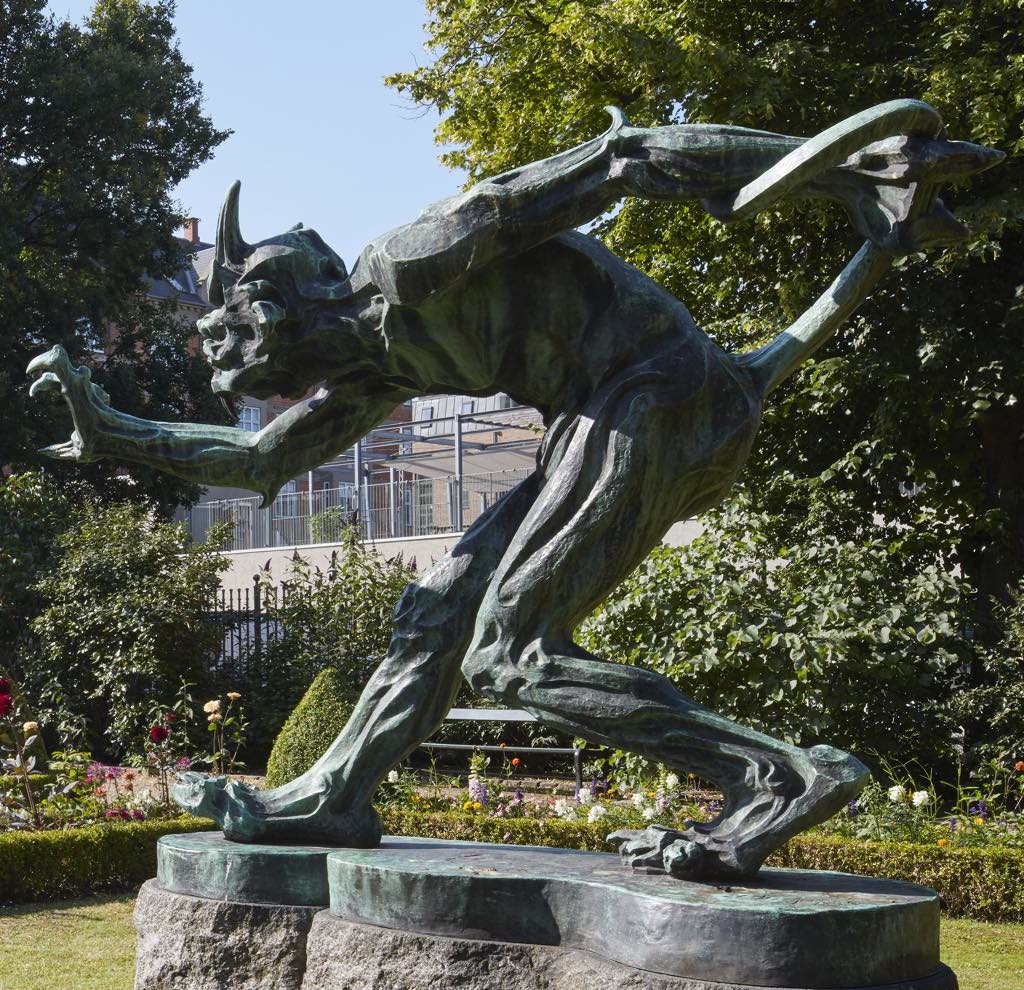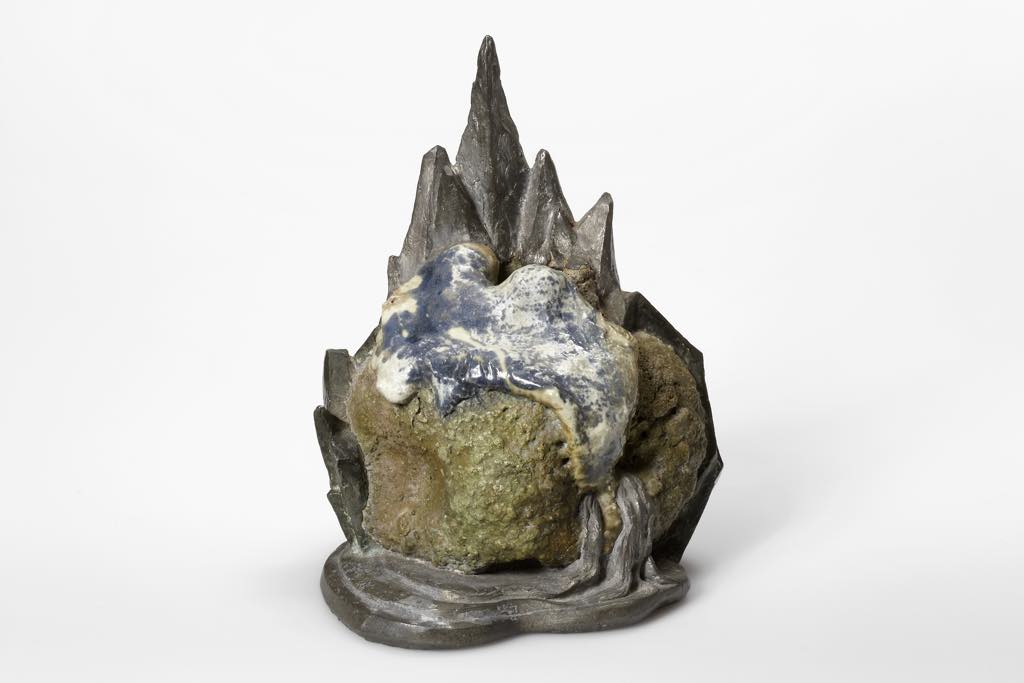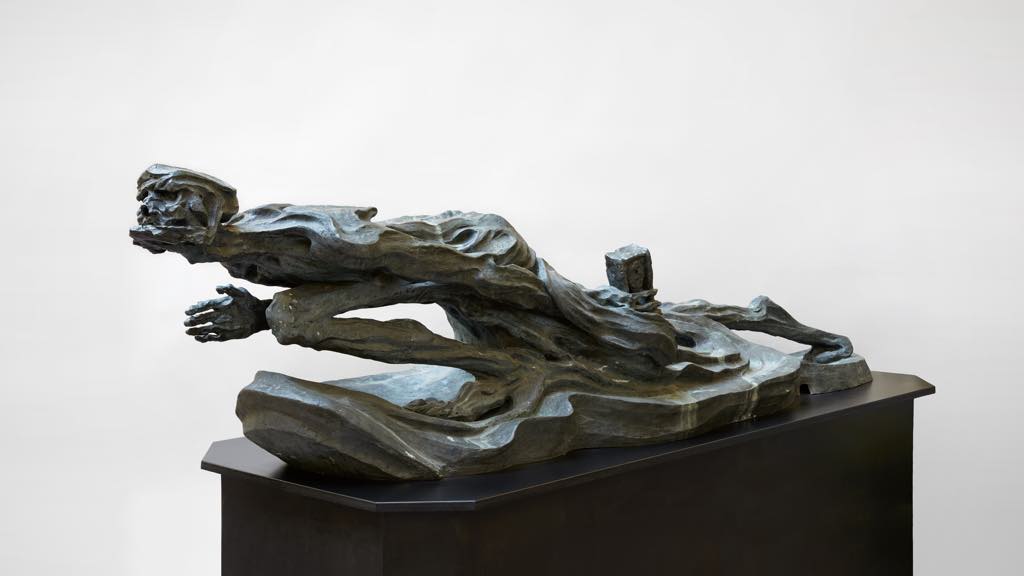
The variety and quality of the temporary exhibitions at the Musée Bourdelle in Montparnasse are always impressive, as they look not just at the work of the sculptor Antoine Bourdelle himself but also what was happening around him in other fields, such as dance (one show, for example, focused on his friend Isadora Duncan), fashion and art. The current exhibition, “The Strange Tales of Niels Hansen Jacobsen, A Dane in Paris,” is no exception to the rule.
Jacobsen (1861-1941), an academically trained sculptor, lived in Paris for 10 years, from 1892 to 1902, and brought with him to the French capital his Nordic sensibility, influenced by the myths and legends of the north and a taste for the bizarre and the uncanny. In Paris, then a bubbling cauldron of artistic invention, he came under the influence of the work of Paul Gauguin and such Symbolists as Odilon Redon. The period was also the heyday of Art Nouveau, and Japanese art was all the rage. All those inspirations went into Jacobsen’s own cauldron and came out in what are indeed “strange” and fascinating works.
Some of his artist friends were ceramicists, and Jacobsen, deciding that his sculptures lacked color, started working with clay for the first time. The fact that he had no training gave him a sense of freedom few ceramicists have. “He broke all the rules,” said Teresa Nielsen, director of the Vejen Kunstmuseumone and one of the show’s curators, who has managed to bring together a small collection of these pieces, which had been thought lost after his death.

Working with no prior constraints, Jacobsen used glazes and clay in completely unorthodox ways and even figured out how to incorporate metal into his ceramic pieces, an unheard-of technique even today. He was unconcerned about the aesthetics of these pieces, and some of them are downright ugly, like “Stylized Mountain Landscape,” an unusual subject for ceramics, to say the least, with its bulbous form, sharp peaks and variety of surface textures. Other ceramic pieces in the show, however, prove that he was also capable of making more polished-looking objects.
A dark strand runs through this entire exhibition, in which works by Hansen Jacobsen are surrounded by those of contemporaries with similar sensibilities and similar influences. Bourdelle is represented by, among other pieces, an amazing “tragic mask” of Beethoven, with whom he was obsessed. In the hallway approaching the exhibition, you will have seen a number of sculptures of the composer by Bourdelle, but the twisted features of this one communicate a great feeling of anguish.

Tragedy is also the theme of Hansen Jacobsen’s sculptures illustrating tales by Hans Christian Andersen (helpfully summarized in wall labels in French and English), including “The Little Mermaid.” His “The Story of a Mother” dramatizes the despair of a mother, collapsed amid the swirl of her dress, as the frightening figure of the devil runs off with the soul of her dead baby.
His terrifying “Troll That Smells Christian Blood” (1896; pictured at the top of this page), inspired by a Norse tale, was purchased by Carl Jacobsen of the Carlsberg brewing company to be placed in front of what is now called the Jesus Church in Copenhagen but was too scary for the parishioners and had to be moved. A copy of it is now back in front of the same church, scaring the sin out of the Christians.

Another of Hansen Jacobsen’s weirdest sculptures can be seen in the exhibition: “The Shadow,” also inspired by a Hans Christian Andersen story. This slippery, stretched-out figure with the face of death incorporates Symbolist and Art Nouveau influences. It slides along the ground with its exaggerated limbs like an animated cartoon figure, its elongated foot bent double as if it is about to spring at its victim.
This delightfully weird show may give you nightmares, but it’s worth seeing anyway.
Favorite
Cela donne vraiment envie d’aller voir cette exposition ! Dès le début ! c’est vrai que les exposition du musée Bourdelle sont en générales très bien documentées, le lieu es magique. Les affiches dans Paris de la tête du faune sont magnifiques. Merci merci pour cette belle découverte.